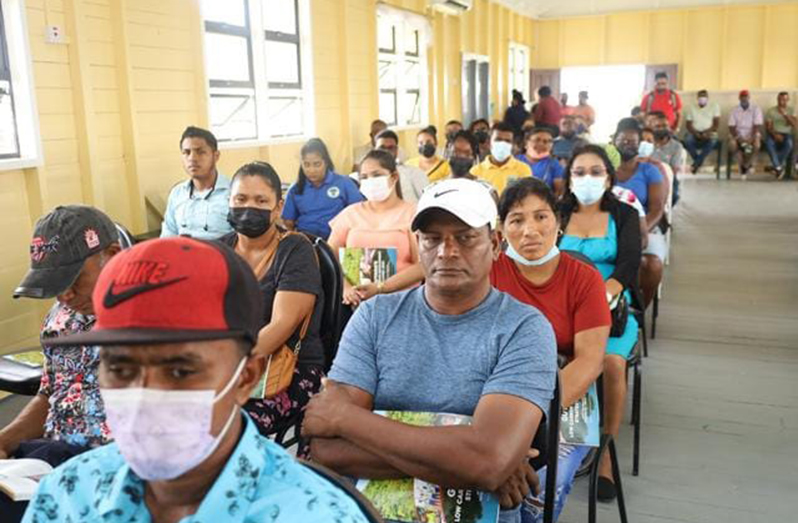TO engage with stakeholders about the programmes included in its Low Carbon Development Strategy (LCDS) 2030, the Government of Guyana conducted a nationwide consultation process last year to address some of the most pressing issues the world is currently facing and how these have been impacting communities and livelihoods in Guyana.
At a consultation session that was held in Bush Lot village in Region Five (Mahaica-Berbice), the Minister of Agriculture Zulfikar Mustapha shared with the large gathering that Guyana launched the first Low Carbon Development Strategy (LCDS) in 2009 as a developing nation. He explained that the strategy outlined a vision for inclusive, sustainable development, while simultaneously maintaining forest cover on about 85% of our landmass.
The minister added that since then, Guyana has developed several systems that establish the enormous contributions that the nation’s ecosystems make to the health and economy of the globe, as well as its status as one of the most crucial nations for the protection of biodiversity. Given its recent oil and gas discoveries, Guyana has had one of the hemisphere’s fastest-expanding economies in 2022, but even so, the country has managed to keep the second-highest percentage of forest cover on the planet, with more than 99.5 percent of the forest, or roughly 18 million hectares, remaining undisturbed, which is mainly attributable to coordinated efforts by the state, the private sector, Indigenous Peoples, and local communities.
During a series of engagements that Minister Mustapha led, he shared with stakeholders that Guyana’s new LDCS 2030 aims to transition the country to a low-carbon economy. He said, “Guyana’s Low Carbon Development Strategy 2030 sets out a vision for expanding a low-carbon economy in Guyana. This will be achieved through low-carbon energy, employment and development opportunities for all sections of our society, a transformation of digital, marine, and transportation infrastructure, and massive investment in adapting to the impacts of climate change. With this strategy, new incentives for a low-carbon economy will be created; systems will be in place to reduce the impacts of climate change and reduce biodiversity loss; future growth through clean energy and low-carbon development will be stimulated, and Guyana will be further aligned with global climate and biodiversity goals.”

Mustapha further explained that by implementing the policies in the LCDS, Guyanese will eventually benefit from a less expensive and more dependable power supply when the nation produces its own natural gas and hydropower.
“Using natural gas as a bridge away from heavy fuel oil, followed by the main hydropower projects, Guyana will see a massive expansion of clean and renewable energy across the country. Energy use can increase five-fold with greenhouse gas emissions staying approximately flat, one of the world’s highest levels of decoupling between economic growth and fossil-fuel use for energy. The Demerara-Berbice Interconnectivity System (DBIS) will have a higher capacity, and become more reliable. Vision 2022–2027 will see a combination of natural gas with hydropower on the DBIS, coupled with a major expansion of solar power with batteries on the rural networks. By 2027–2032, continued replacement of heavy fuel oil, expansion of wind and solar power, and the commissioning of Guyana’s second hydropower plant, the site of which will be identified before 2025. “Moreover, from 2032 onwards, the government will move to expand these efforts, which will be determined by prevailing market conditions,” the minister added.
One of the highest levels of decoupling between economic growth and the use of fossil fuels is possible when energy demand increases fivefold, while greenhouse gas emissions remain roughly unchanged. There will be an increase in capacity and increased dependability for the Demerara-Berbice Interconnectivity System (DBIS). On the DBIS, the combination of natural gas and facility will be used, along with a significant increase in solar power, with batteries, on the rural networks.
The minister explained that the continued replacement of heavy fuel oil, growth in wind and solar energy, and the opening of Guyana’s second hydropower project, the location of which will be determined by 2025, are all goals for the years 2027 to 2032. Additionally, starting in 2032, the government will seek to intensify these efforts, which will depend on the state of the market.(This is part of a weekly series on LCDS.) The author can be contacted at cparkinson0206@gmail.com).



.jpg)











